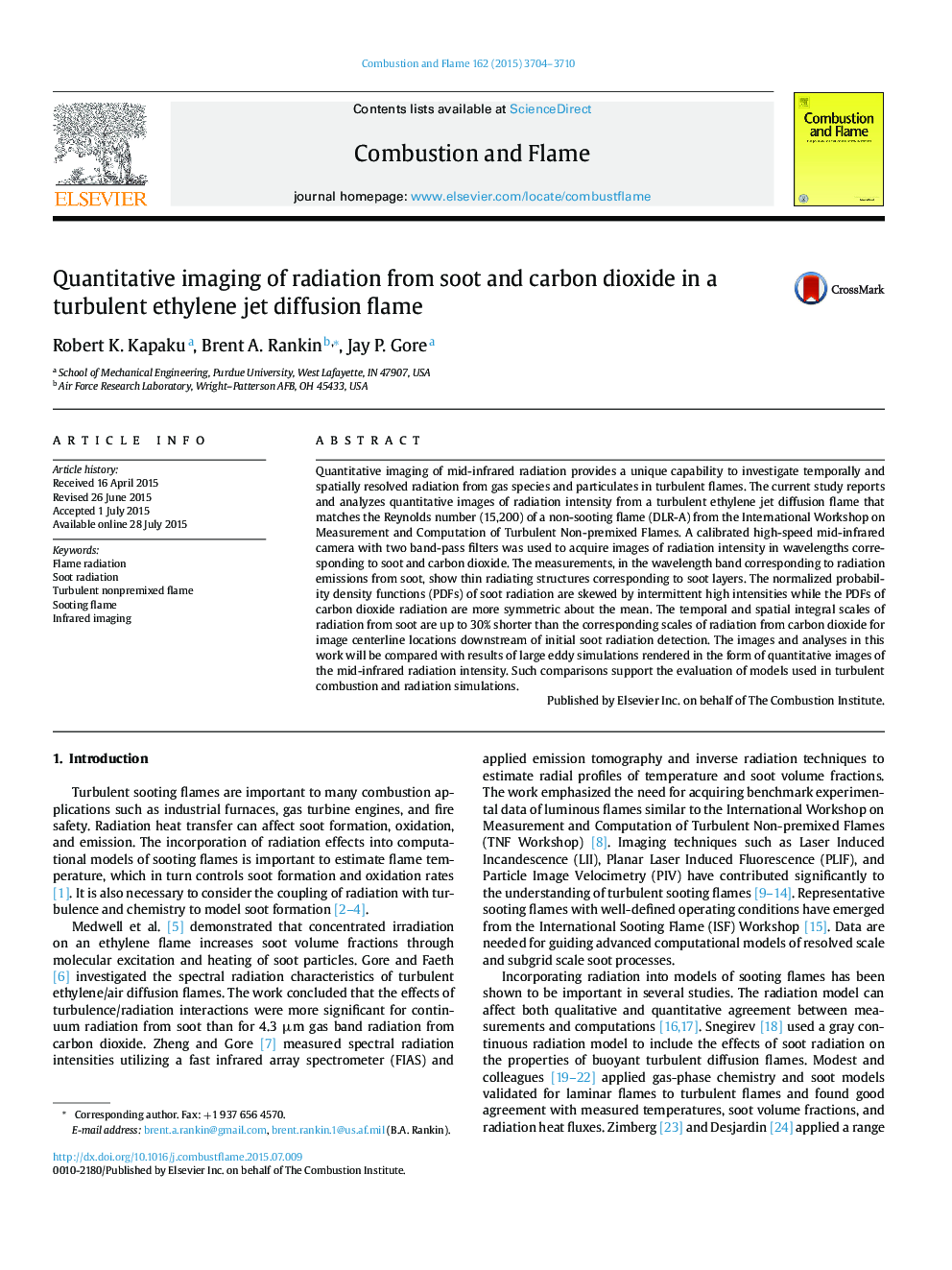| Article ID | Journal | Published Year | Pages | File Type |
|---|---|---|---|---|
| 10264766 | Combustion and Flame | 2015 | 7 Pages |
Abstract
Quantitative imaging of mid-infrared radiation provides a unique capability to investigate temporally and spatially resolved radiation from gas species and particulates in turbulent flames. The current study reports and analyzes quantitative images of radiation intensity from a turbulent ethylene jet diffusion flame that matches the Reynolds number (15,200) of a non-sooting flame (DLR-A) from the International Workshop on Measurement and Computation of Turbulent Non-premixed Flames. A calibrated high-speed mid-infrared camera with two band-pass filters was used to acquire images of radiation intensity in wavelengths corresponding to soot and carbon dioxide. The measurements, in the wavelength band corresponding to radiation emissions from soot, show thin radiating structures corresponding to soot layers. The normalized probability density functions (PDFs) of soot radiation are skewed by intermittent high intensities while the PDFs of carbon dioxide radiation are more symmetric about the mean. The temporal and spatial integral scales of radiation from soot are up to 30% shorter than the corresponding scales of radiation from carbon dioxide for image centerline locations downstream of initial soot radiation detection. The images and analyses in this work will be compared with results of large eddy simulations rendered in the form of quantitative images of the mid-infrared radiation intensity. Such comparisons support the evaluation of models used in turbulent combustion and radiation simulations.
Related Topics
Physical Sciences and Engineering
Chemical Engineering
Chemical Engineering (General)
Authors
Robert K. Kapaku, Brent A. Rankin, Jay P. Gore,
